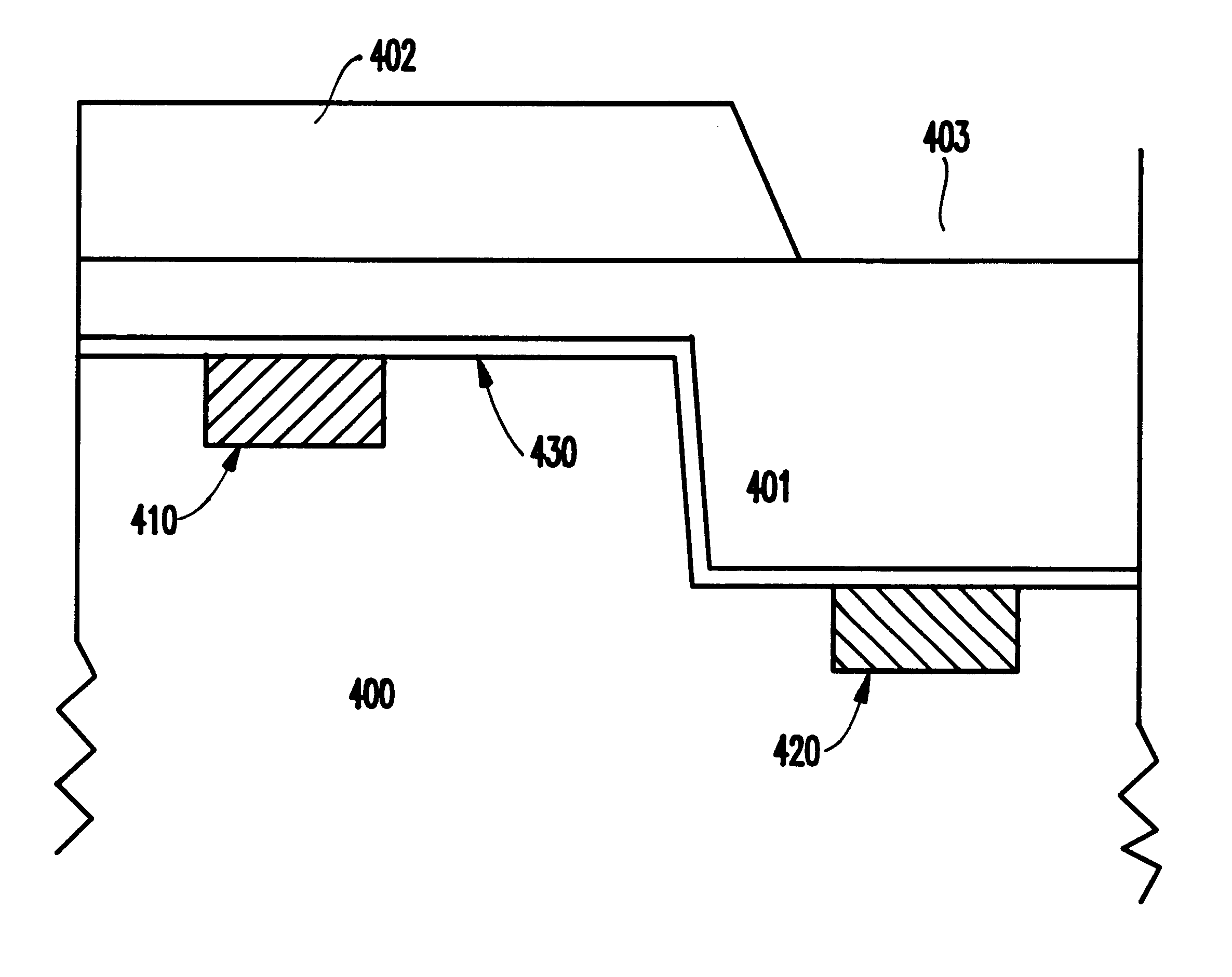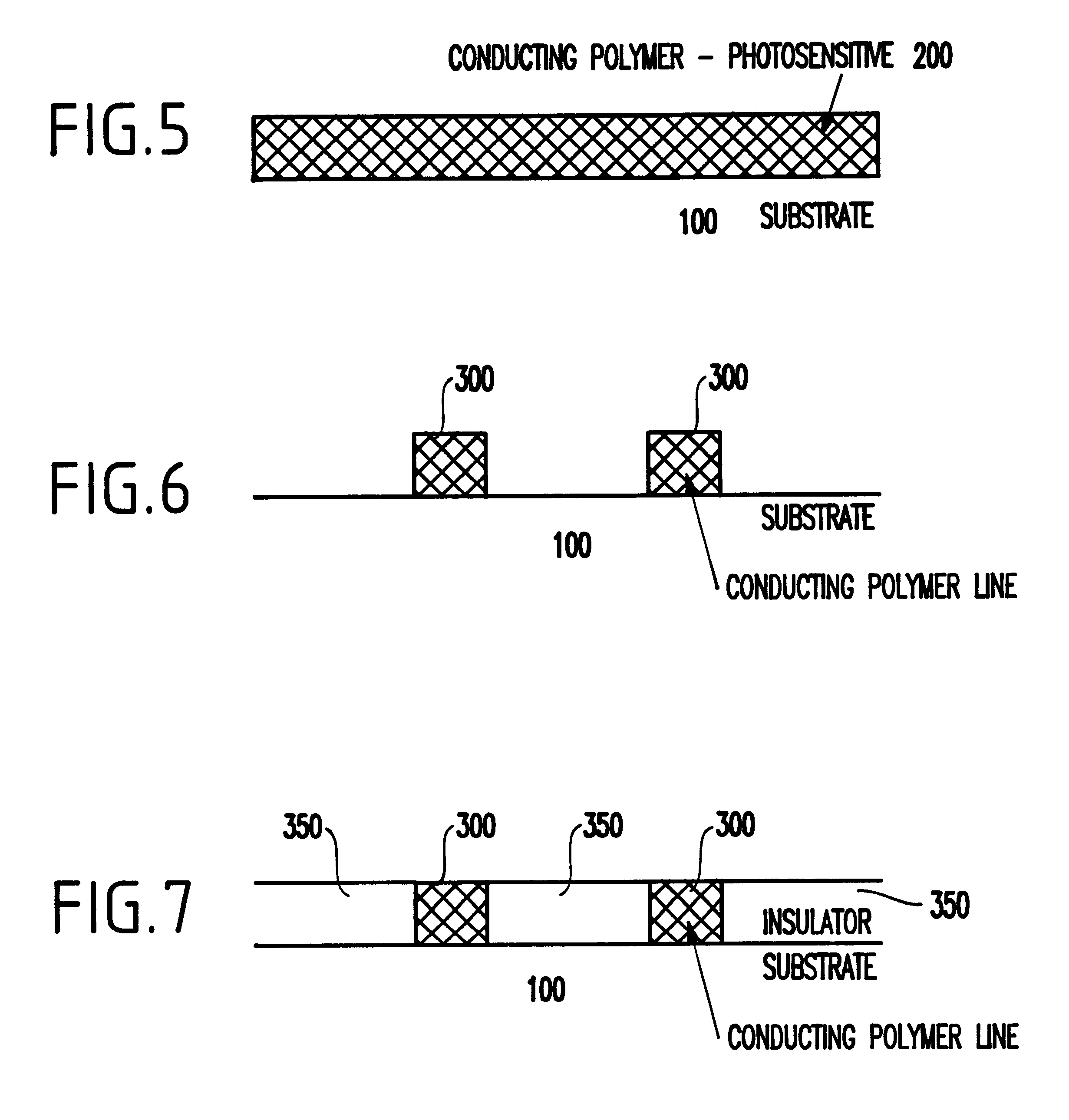Patterning microelectronic features without using photoresists
a microelectronic feature and photoresist technology, applied in the field of integrated circuit storage devices, can solve the problems of requiring many more processing steps, requiring multiple metalization deposition steps, and complex processes,
- Summary
- Abstract
- Description
- Claims
- Application Information
AI Technical Summary
Benefits of technology
Problems solved by technology
Method used
Image
Examples
Embodiment Construction
As mentioned above, there is a need to simply the processing steps in a traditional damascene process. The invention addresses this need by providing a simplified approach for producing micron and sub micron metallic conducting lines embedded in an insulating dielectric layer. In a preferred embodiment, an alternative methodology to the "damascene" approach which is being referred to as the "cloisonne" or "inverse damascene" approach is disclosed.
Referring now to the drawings, and more particularly to FIGS. 1 through 4, there are shown the conventional embodiments of the damascene method and structure. The prior art method of producing conducting lines embedded in an insulating matrix is called the damascene process. The prior art damascene process has the disadvantage of requiring etching of the insulating layer and / or requiring multiple metalization deposition steps contrary to the current disclosure. With the traditional damascene process, a thin film insulator 20 is first deposi...
PUM
| Property | Measurement | Unit |
|---|---|---|
| Electrical conductor | aaaaa | aaaaa |
| Metallic bond | aaaaa | aaaaa |
| Photosensitivity | aaaaa | aaaaa |
Abstract
Description
Claims
Application Information
 Login to View More
Login to View More - R&D
- Intellectual Property
- Life Sciences
- Materials
- Tech Scout
- Unparalleled Data Quality
- Higher Quality Content
- 60% Fewer Hallucinations
Browse by: Latest US Patents, China's latest patents, Technical Efficacy Thesaurus, Application Domain, Technology Topic, Popular Technical Reports.
© 2025 PatSnap. All rights reserved.Legal|Privacy policy|Modern Slavery Act Transparency Statement|Sitemap|About US| Contact US: help@patsnap.com



